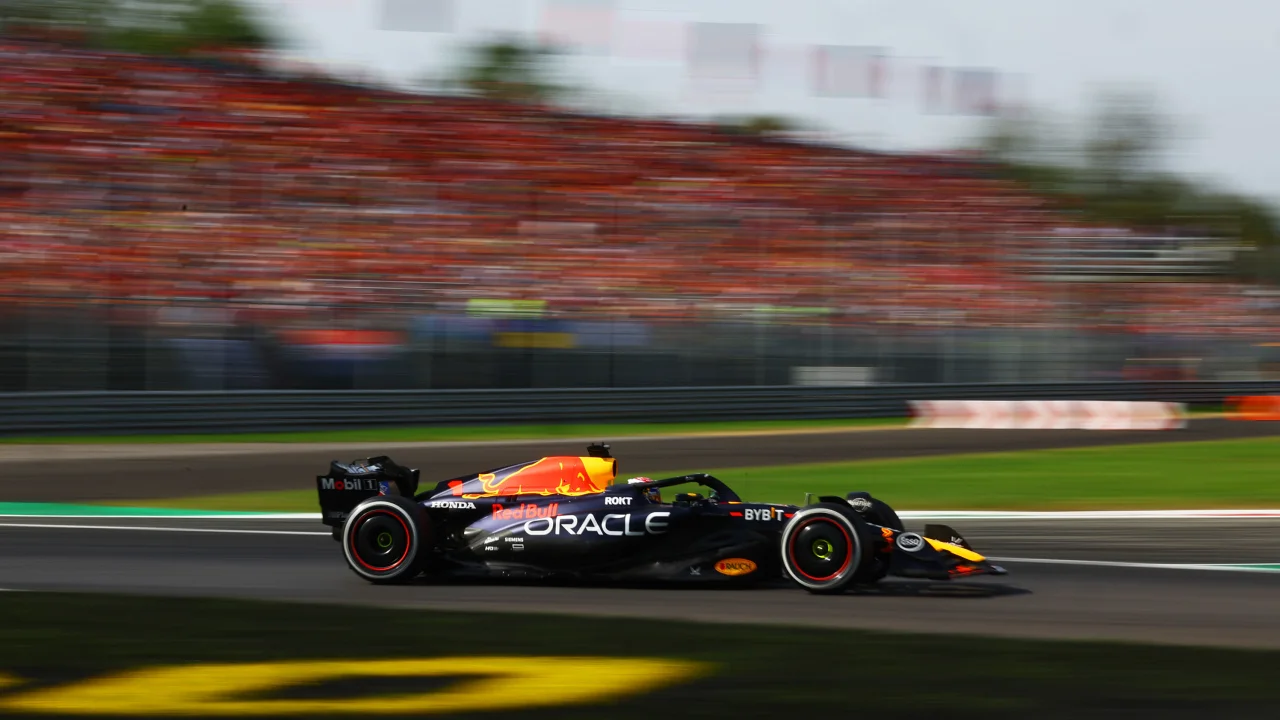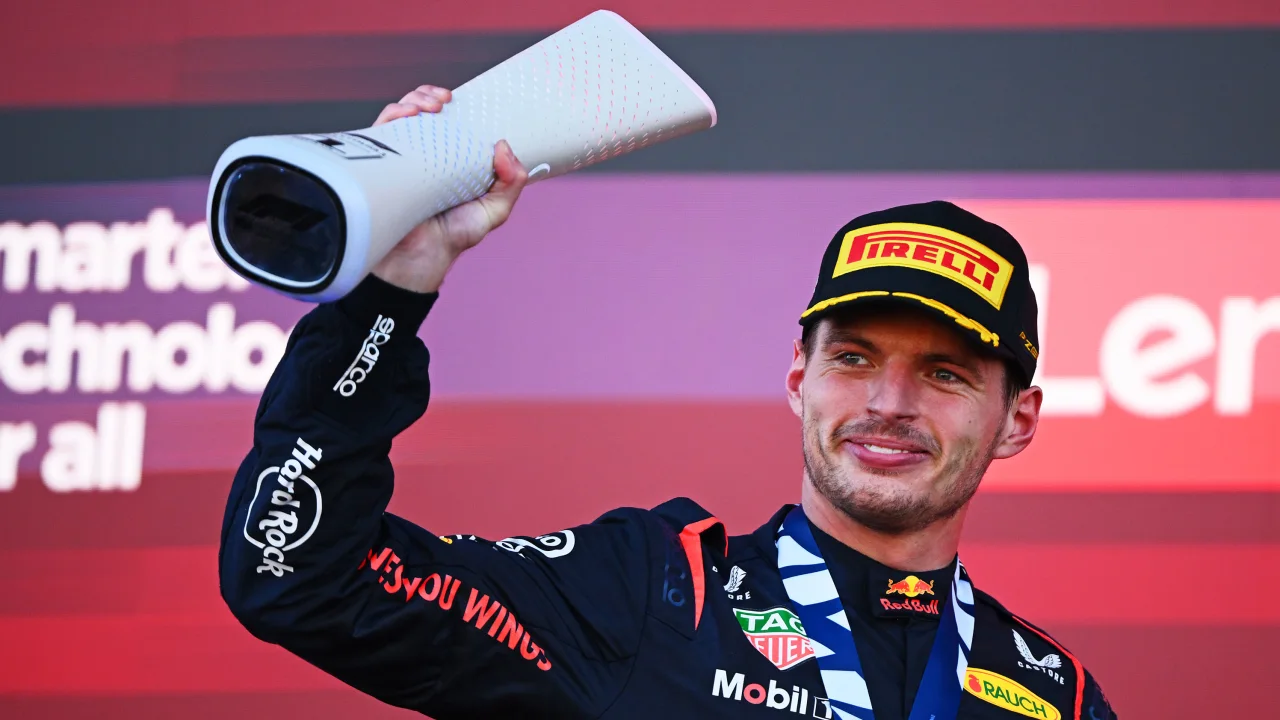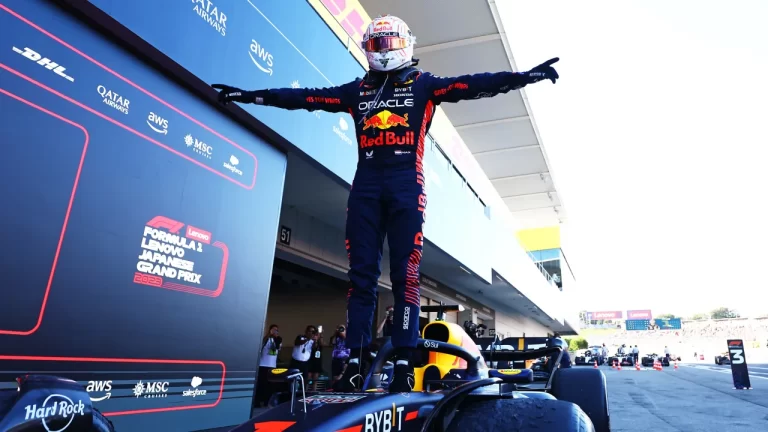Formula One is no stranger to engineering excellence. It is the pinnacle of motorsport, a place where otherworldly machinery is pushed to its very limit. We should no longer be surprised by what humanity and technology working in tandem can achieve.
However, Red Bull Racing’s 2023 competitor, the RB19, has absolutely fried the system and blown past the boundaries of what appeared possible in this sport.
The word “dominance” can now be defined by a picture of Max Verstappen standing victorious atop his race-winning machine. Many F1 fans probably know the Dutch and Austrian anthems by heart by now, considering how frequently they have been played post-race this season.
“The RB19 is probably the best Formula One car that’s ever been created, which is a pretty impressive feat considering we’ve seen some special projects over the last few decades,” F1 correspondent and presenter Lawrence Barretto told CNN Sport. “It’s almost a complete car.
“It is that ideal combination of a great power unit and a great aerodynamic package.”
It’s not just the ridiculous lap times and vast winning margins that make this car exceptional – the ubiquitous sense of knowing exactly how a race weekend is going to go is not seen too often in this sport.
“It is not just the consistency of performance, but the consistency of how well it works across such a wide range of conditions, corner speed profiles and tracks,” F1 journalist Edd Straw said to CNN Sport. “It’s a car that just works pretty much everywhere.”
The stats don’t lie
Red Bull’s current driver lineup consists of the all-conquering Verstappen and 12-year F1 veteran Sergio Pérez. The pair sit first and second in the Driver Standings and wrapped up the 2023 Constructors’ Championship at Suzuka with six races to spare.
A Red Bull driver has seen the checkered flag first at 15 out of the 16 races this season (Ferrari’s Carlos Sainz was on the top step of the podium at the Singapore Grand Prix), with Verstappen winning 13 alone. He also won 10 races in a row from Miami in May to Monza in September, breaking Sebastian Vettel’s record of nine consecutive victories and could clinch a third world title this weekend in Qatar.
The team also has 11 pole positions and 10 fastest laps to its name and has won all three sprint races so far.
Red Bull has somehow built upon its 2022 car, the RB18, which won 17 out of 22 races. Verstappen was in a record-breaking mood that year as well, taking 15 victories in a single season, eclipsing Vettel and Michael Schumacher’s 13.
The RB19 has subsequently been compared to some of the all-time greats in the sport, with Straw putting it in the same “ballpark” as Ferrari’s F2002, Mercedes’ W11 and McLaren’s MP4/4, which won 15 out of 16 races.
This Red Bull car has been so dominant, in fact, that it has sparked a debate around how much time teams should be allowed to spend developing their next car.
Seven-time world champion Lewis Hamilton suggested that teams should be forced to wait until the summer break to start working on next season’s offering.
“I think the FIA should probably put a time when everyone is allowed to start developing on the next year’s car,” he told Sky Sports earlier this year. “So August 1, that’s when everybody can start so then no one can get an advantage on the next year, ‘cause that sucks.
“If everyone had a cut-off time, then no one has a head start and it’s a real race in that short space of time for the future car. Maybe that would help everyone be more on a level the following year.”
Verstappen, unsurprisingly, was not impressed.

“We weren’t talking about that when [Hamilton] was winning his championships, right? So I don’t think we should now,” he said to Sky Sports.
“That’s how Formula 1 works. When you have a competitive car, it’s great, but at one point, of course, you also have to look ahead to the next year.”
Acing the regulation changes
While multiple teams had a heavy swing and miss on the new regulations introduced for 2022, Red Bull hit an absolute home run. The aforementioned RB18 swept the competition and left the Austrian manufacturer as the one to beat.
However, things looked down for the team when it had a $7 million fine and a reduction in allocated wind tunnel testing time levied upon it by the FIA, the sport’s governing body.
The penalty came about as a result of breaching the FIA’s newly introduced Cost Cap, designed to limit spending in almost all areas in order to level the playing field in F1. However, just when it seemed as though the Bulls might be reined in, they stretched their legs.
“When Red Bull attacked the new regulations, they just did a better job than everyone else,” said Barretto.
“The technical team is just a very special group of brains, and they just saw things that the other teams simply didn’t, and they were able to put together a package that makes the most of the key part of the regulations, which is the floor.
“They were able to create a floor that runs very, very low and flat up against the track, and that just means that they get a huge amount of downforce, considerably more than any of their rivals.”
The team’s ability to take to the new regulations like ducks to water (Bulls to tarmac?) is down in no small part to the continued technical wizardry of chief technical officer Adrian Newey.
Newey has been designing F1 cars since 1988 and has won 12 Constructors’ Championships, split between his time at Williams, McLaren and Red Bull. He also helped seven different drivers to 12 – soon to be 13 – titles.
Red Bull team principal Christian Horner has described Newey as “the only bloke that can see air” in an interview with Red Bull.
Straw calls Newey “central” to the entire operation, saying that he “offers a single-minded vision” when it comes to designing these machines and credits him with “setting the modern aerodynamic template for modern F1 cars.”
The Max Verstappen factor
Red Bull’s 2023 machine may be a feat of engineering genius, but it takes an elite-level driver to really extract the most out of any F1 car. The fearsome blend of Verstappen and the RB19 is one of the most potent driver-car combinations the sport has ever seen.
“We’ve seen Michael Schumacher have such great periods with Ferrari, we’ve seen Lewis Hamilton have great periods of dominance with Mercedes, but we haven’t seen this kind of dominance within such a short period of time,” said Barretto.
“What’s particularly impressive this year for Max is that, even if he hasn’t always started at the front, he’s always had the confidence within himself that he can get to the front. And that comes from not only his belief in his own ability, but his belief in the quality of the car and the quality of the team.”
“What Lewis, Michael and Seb have done better is they’ve had it for a long period of time … but this is the best single season from one driver.”
Lonely at the top – for now
Dominance and dynasties in sports always come to an end, whatever happens. Roger Federer’s time at the top of tennis ultimately fizzled out. The Bill Belichick and Tom Brady years in New England could not last forever. And Mercedes eventually ceded its position at the summit of F1 to Red Bull in 2022 after being in control for much of the turbo-hybrid era.
Whether Verstappen and Red Bull like it or not, the rest of the field will catch up to them at some point. The question now, with new regulations on the way again in 2026, is: how long can they keep this up? Because the regulations will remain reasonably stable between now and when the new regs arrive in 2026, it’s difficult to see how Red Bull won’t be the class leader,” said Barretto.

“Next year, maybe even 2025 as well, they will be the ones to beat, but that doesn’t mean they can’t be beaten. The advantage over the field will drop gradually over time.”
There is always the possibility though that the team does the unthinkable – again – and pushes on even further. After the Australian Grand Prix in April, Mercedes driver George Russell suggested that, rather frighteningly, we have not seen the best of Red Bull yet.
“For sure, they’re holding back,” he told BBC Radio 5 Live. “I think they almost are embarrassed to show their full potential because the faster they seem globally, the more the sport is going to try to hold them back somehow.”
Horner was quick to dismiss Russell’s allegations of what is known as “sandbagging” – the practice of deliberately underperforming to hide your car’s true ability. But it does raise the question: how far can Red Bull go?
— CutC by cnn.com


